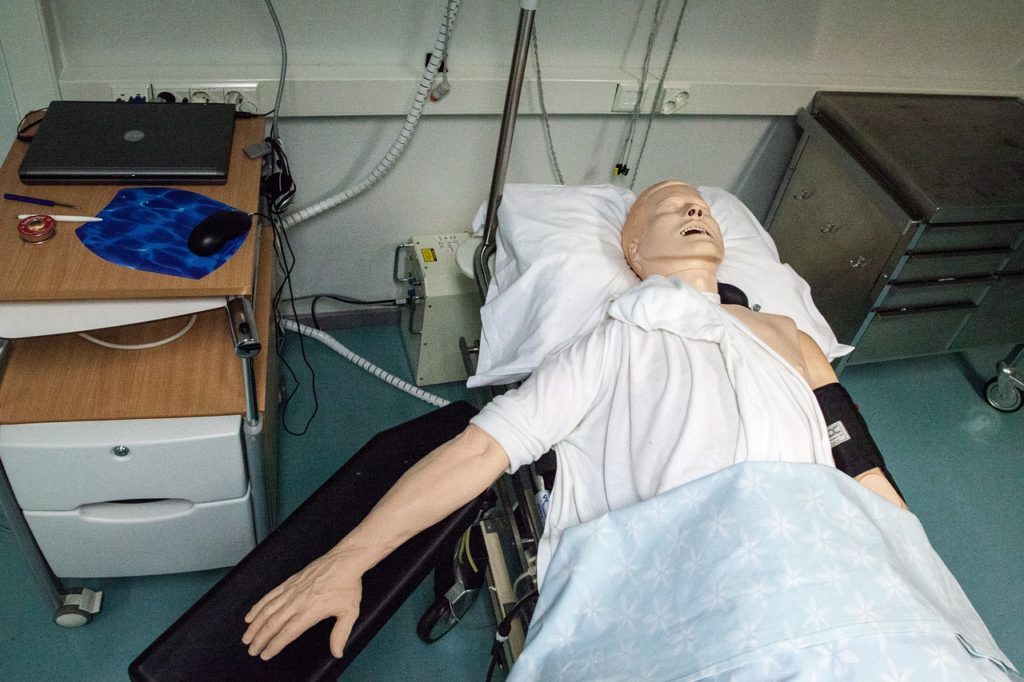
Choking is a serious medical emergency that occurs when an object, food, or liquid becomes lodged in a person’s airway, obstructing their ability to breathe. If the airway is blocked completely, the individual can suffocate in just a matter of minutes. Choking can happen to anyone, but prompt action can save a life. Knowing the first aid steps to take when someone is choking is critical, as it can mean the difference between life and death.
Recognizing the Signs of Choking
Before acting, it’s important to recognize the signs of choking. These include:
- Inability to speak: The person may be unable to speak or make sound because their airway is blocked.
- Coughing or gagging: The person may cough forcefully in an attempt to dislodge the obstruction.
- Wheezing or gasping for air: Breathing may become labored, with a wheezing or high-pitched sound.
- Clutching the throat: The person may instinctively place their hands around their neck as they struggle to breathe.
- Blue or pale skin: As the lack of oxygen sets in, the person’s skin, particularly around the lips and face, may turn blue or pale.
- Loss of consciousness: If the blockage is not cleared, the person may lose consciousness.
Immediate Steps to Take for a Choking Victim
If you witness someone choking, it’s crucial to act quickly. Here are the steps you can follow to potentially save their life:
1. Encourage Coughing (If the Person Can Still Breathe and Cough)
If the person is still able to cough or make noise, encourage them to keep coughing. Often, coughing is the body’s natural reflex to dislodge an object blocking the airway. Remain calm and give them the space to try to clear their airway on their own.
2. Perform the Heimlich Maneuver (Abdominal Thrusts)
If the person cannot breathe, speak, or cough and is in distress, perform the Heimlich maneuver (abdominal thrusts). Here’s how:
- Stand behind the person: For adults or children over one year old, stand behind the choking person and wrap your arms around their waist.
- Make a fist: Place the thumb side of your fist just above the person’s navel (belly button).
- Grasp your fist with your other hand: Hold the fist firmly with your other hand and make sure the person’s body is slightly tilted forward.
- Give quick, inward and upward thrusts: With a quick, forceful motion, push inward and upward. The goal is to increase pressure in the chest cavity and force the object out of the airway. Continue performing abdominal thrusts until the object is expelled or the person starts to breathe.
- Repeat if necessary: Continue performing the Heimlich maneuver until the person begins to breathe again, or emergency help arrives.
3. If the Person Becomes Unconscious, Start CPR
If the person loses consciousness, it’s important to begin CPR (Cardiopulmonary Resuscitation). Here’s how:
- Call Emergency Services: Immediately dial 911 or your local emergency number. Time is critical.
- Begin Chest Compressions: Lay the person on their back on a firm surface. Kneel beside them, place one hand on the center of their chest, and place the other hand on top of the first hand. Press down hard and fast at a rate of 100-120 compressions per minute, allowing the chest to fully recoil between compressions.
- Open the Airway: After 30 compressions, open the person’s airway by tilting their head back and lifting the chin.
- Give Rescue Breaths: Pinch their nose shut, take a normal breath, and cover their mouth with yours, giving two rescue breaths. Make sure the chest rises with each breath. Continue the cycle of 30 compressions and 2 breaths until the person starts breathing or emergency medical help arrives.
- Use an AED if Available: If an automated external defibrillator (AED) is available, follow the voice prompts to deliver a shock if needed. This may help restart the heart if it has stopped.
4. For Children Under 1 Year Old (Infants)
If an infant is choking, the Heimlich maneuver is not appropriate. Instead, follow these steps:
- Support the Infant’s Head and Neck: Hold the infant face down on your forearm, keeping their head lower than their chest.
- Deliver Back Blows: Using the heel of your hand, deliver up to five sharp back blows between the infant’s shoulder blades.
- Turn the Infant Over: If the object is not expelled, turn the infant onto their back, keeping their head lower than the chest.
- Give Chest Thrusts: Place two or three fingers in the center of the infant’s chest just below the nipple line and perform up to five chest thrusts.
- Repeat as Necessary: Alternate between back blows and chest thrusts until the object is dislodged or emergency help arrives.
5. For Children Over 1 Year Old
For children over one year old, the Heimlich maneuver can be performed as it is for adults. However, the technique should be adapted based on the child’s size:
- For children 1-5 years old: Use one hand to perform the Heimlich maneuver with less force.
- For children 5 years and older: Use both hands, similar to the adult method.
When to Call Emergency Help
Even if you successfully clear the airway and the person starts breathing again, it’s important to call emergency services. The person may still need medical attention, especially if they are in respiratory distress, injured, or have difficulty breathing after the obstruction is cleared.
Conclusion
Choking is a frightening situation, but knowing how to perform first aid can be the difference between life and death. Whether the victim is an adult, child, or infant, it is essential to act quickly and appropriately. By performing the Heimlich maneuver, giving CPR if necessary, and seeking emergency medical help, you can help save a life in seconds. Remember, staying calm and being prepared to act can save someone’s life when every second counts.
